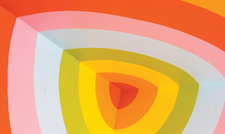Current desktop innovation
Distro Walk – Pop!_OS

© Photo by Jason Leung on Unsplash
Pop!_OS, known for its innovation, customization, and user-friendliness, features one of the easiest tiling desktop options available.
The years 2008-2012 marked an era of innovation for the Linux desktop: Gnome and KDE introduced radically new desktops, and Ubuntu developed Unity. However, the innovations were too much for many users. By the time development of Unity stopped altogether in October 2017, desktop developers had long since become more cautious. The age of bold experimentation seemed to be over. However, Ubuntu's switch from Unity back to Gnome immediately inspired the creation of Pop!_OS by System76, a company best-known for its Linux laptops and workstations [1]. Now, five years later, Pop!_OS has gained a reputation for innovation, particularly for the small enhancements in its installer, the modifications of Gnome and Ubuntu, and, most importantly, an option for the easiest tiling desktop yet.
Jeremy Soller, Pop!_OS's principal engineer, remembers: "When Ubuntu transitioned from Unity to Gnome Shell, the result was something we felt could be improved upon. Creating a new distribution was required due to the large number of changes we wanted to apply to Ubuntu." Over the past five years, this intent has evolved into the COSMIC desktop (which stands for Computer Operating System Main Interface Components, although the full name is rarely used these days), a graphic environment influenced by Unity, elementary OS, and tiling desktops such as awesome and XMonad, with an emphasis on user-friendliness that consists of a variety of small, thoughtful touches (Figure 1).
Sophie Coffey, System76's marketing director, writes that, "Pop!_OS is an operating system for STEM and creative professionals who use their computer as a tool to discover and create. Developers, engineers, and AI/Machine Learning professionals can benefit from Pop!_OS as readily as gaming enthusiasts."
[...]
Buy this article as PDF
(incl. VAT)
Buy Linux Magazine
Subscribe to our Linux Newsletters
Find Linux and Open Source Jobs
Subscribe to our ADMIN Newsletters
Support Our Work
Linux Magazine content is made possible with support from readers like you. Please consider contributing when you’ve found an article to be beneficial.

News
-
Linux Mint 22.3 Now Available with New Tools
Linux Mint 22.3 has been released with a pair of new tools for system admins and some pretty cool new features.
-
New Linux Malware Targets Cloud-Based Linux Installations
VoidLink, a new Linux malware, should be of real concern because of its stealth and customization.
-
Say Goodbye to Middle-Mouse Paste
Both Gnome and Firefox have proposed getting rid of a long-time favorite Linux feature.
-
Manjaro 26.0 Primary Desktop Environments Default to Wayland
If you want to stick with X.Org, you'll be limited to the desktop environments you can choose.
-
Mozilla Plans to AI-ify Firefox
With a new CEO in control, Mozilla is doubling down on a strategy of trust, all the while leaning into AI.
-
Gnome Says No to AI-Generated Extensions
If you're a developer wanting to create a new Gnome extension, you'd best set aside that AI code generator, because the extension team will have none of that.
-
Parrot OS Switches to KDE Plasma Desktop
Yet another distro is making the move to the KDE Plasma desktop.
-
TUXEDO Announces Gemini 17
TUXEDO Computers has released the fourth generation of its Gemini laptop with plenty of updates.
-
Two New Distros Adopt Enlightenment
MX Moksha and AV Linux 25 join ranks with Bodhi Linux and embrace the Enlightenment desktop.
-
Solus Linux 4.8 Removes Python 2
Solus Linux 4.8 has been released with the latest Linux kernel, updated desktops, and a key removal.

